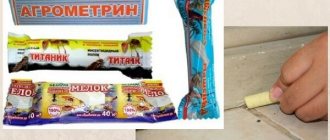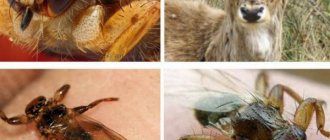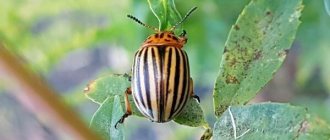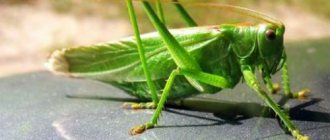Gardeners begin to prepare for the next dacha season in the winter: they plan plantings, choose seeds, and buy tools. The new season may be overshadowed by the search for an effective way to combat mole rats. The blind animal is called a malicious destroyer of household plots. Crop loss is an important, but not the only danger of an unpleasant neighborhood. An uninvited guest distorts the landscape and destroys flower beds. When starting a confrontation, you should find out what the pest looks like; get acquainted with behavioral characteristics and preferences; choose an effective method of struggle.
What is a mole rat?
The mammal is a rodent and belongs to the mole rat family. The body of the animal has an elongated shape. The wide, flat head, which is compared to a shovel, blends smoothly into the body. The ears are hidden under the fur. The short tail is covered by thick skin. The bare nose, covered with a layer of keratinized skin, protects the animal from injury.
The mole rat has no vision at all. Thick skin and coarse hairs cover the eyes, depriving the rodent of the ability to perceive light. All teeth, except two large incisors, are covered with multifold lips. The animal digs the ground with its protruding incisors. With its five-toed paws, it throws away the soil like a scoop. The forelimbs are shorter than the hind limbs. With a weak voice, the animal makes quiet sounds, similar to a squeal.
The thick fur of young individuals is painted silver; in adults, the fur is darker, with a noticeable tint of gray and brown shades. The hair on the abdomen and head is lighter than on other parts of the body. White spots may appear on the abdomen, and a vertical white stripe or cream spot may appear on the back of the head and forehead. The mouth is surrounded by blond hair.
Mole rat and mole: what is the difference
Different types of animals can spoil the appearance of a site and harm the crop. The most malicious diggers include the mole and the mole rat. Having suspected a mole rat of sabotage, it is necessary to determine whether this rodent is actually misbehaving in the garden. Externally, mole rats and moles are similar to each other, they live underground, but there are differences between the animals:
- Mole individuals are slightly smaller.
- The stems and underground parts of plants - everything that mole rats feed on - are not of interest to moles: the food of these animals is insects.
- The main difference is the “tool” that the animals use to dig. The mole uses its front paws, while the mole rat uses wide, strong incisors.
- The mole rat works faster; the height of the formed pile of earth is slightly higher (up to 50 cm).
On the right is a mole rat, on the left is a mole.
Knowing exactly what kind of pest has settled nearby, they choose an effective method of control.
Character and lifestyle
Traces of the appearance of the mole rat are visible on the hills and dried plants, the tubers of which the rodent ate. The mammal constructs labyrinths at a depth of 0.25 - 0.85 m. It moves through underground tunnels by crawling. Having accidentally found himself on the surface of the earth, he gets lost and tries to hide underground. Early morning and late evening are the times when the animal is most active. When the temperature rises from +28℃ and sharply drops from +12℃ and below, activity decreases.
In the spring, the mole rat begins to create new passages. In summer it moves along them for food. In the fall, work continues: the animal enlarges the passages on the lower floors to organize supplies. At this time, soil is not pushed to the surface. At the end of autumn, rodents move towards the forest belt: under a large layer of snow, the ground freezes less. In winter, the mole rat does not sleep, but its activity decreases.
Reproduction
Animals reach sexual maturity by the third year of life. Mole rats produce offspring once a year at the end of winter or beginning of spring. In each family group, only one female produces offspring per year. There are never more than three cubs in a litter. As they grow up, young animals disperse throughout the territory.
Males do this underground, females on the surface, which is why a large number of them die in the first year of life. For this reason, a large number of males live independently and do not participate in population reproduction. When searching for a new place of residence, they are able to cover distances of several hundred meters.
Habitats
Areas covered with herbaceous vegetation are full of tasty, succulent roots. The mole rat often lives here. The animal lives in forests - along paths, in clearings. Less common in plowed fields. The habitat habitual for the mole rat is limited to lake-feather grass steppes and floodplains of rivers (the lower reaches of the Terek, near the Ural River). The animal occupies areas in forest-steppe and steppe zones on the Russian-Ukrainian border, and occupies part of Moldova. In the north, the mole rat lives in Mordovia, Oryol region, and Chuvashia. In the south - in the region of the Caucasus Mountains. The soil in the habitat is moderately loose and dense; uncultivated lands are suitable for favorable living. After plowing the plantation, the animal moves to forest edges and roadsides.
Rodent nutrition
A vegetable garden is an ideal habitat for an animal. Here the mole rat will not remain hungry. The animals eat the same food. The daily menu includes: roots, tubers, vegetable and flower bulbs. The stems of juicy root vegetables are eaten. Preference is given to asteraceae and legumes. Having grabbed the root, the mole rats pull the plant into the hole and begin to dine.
In summer, the rodent eats at least 0.7 kg of food daily. Prepares carefully for winter: the weight of the reserves is more than 0.1 c. The roots are chewed into fragments and stacked; The bulbs are stored whole. In the pantry, the mole rat hides up to 15 kg of potatoes and 12 - 14 kg of other vegetables. When stocking up, a family of rodents causes great damage to gardeners.
Lifespan and reproduction
The life of a mole rat lasts 3 – 9.5 years. Sexual maturity occurs, on average, at the age of three years. Animals create unions when the breeding phase begins, at other times they live alone. The family consists of a male and one (rarely two) females living in neighboring burrows. An individual ready for mating makes sharp muttering and wheezing sounds. Hearing the call, the male hurries to the chosen one. To get to the source of sound, mole rats dig tunnels.
Maybe it will be interesting for you to read and find out who shrews are, where they live and how to identify a shrew or a mole? in the article: -
In each family, females give birth in turns: the first year - one, the second - another individual. Childbirth takes place from mid-February to the end of May. Mole rat cubs are born bald. The thick, short coat grows back quickly. The weight of a newborn does not exceed 5 g. No more than three babies are born at the same time. At the beginning of summer, children are able to forage for food, but remain in the nest. After a year, the parents consider the “girls” to be independent and move them to the upper floors. Life on the surface is full of dangers; one-year-old females often die. “Boys” grow up a year later. Young males are transferred to the lower tier. Young animals settle during the summer.
What kind of animal is this?
The mole rat's lifestyle is similar to that of a mole: it lives exclusively underground, digs long systems of passages, and pushes excess soil to the surface, forming unsightly mounds. But in general, this is a completely different animal, differing in appearance, body structure, behavioral characteristics, and even the nature of its harmfulness...
Mole rats (Spalax) are a genus of mammals of the mole rat family of the order Rodents, leading an underground lifestyle. There are about 4 types in it.
Mole rats are small animals, only up to 30–32 cm long, without ears, without a pronounced neck, with atrophied eyes hidden under the skin, a very small inconspicuous tail and short gray fur. Unlike moles, which feed on insects, animals feed on plant foods - they eat rhizomes, roots, tubers, and bulbs. To get to the above-ground parts of plants, they are dragged into a hole by the root. They especially love legumes, umbelliferae, and asteraceae. The stems and leaves are eaten mainly in spring and early summer.
The burrow systems of mole rats are distinguished by tiers. The first tier is food, located at a depth of 20–25 cm from the soil surface. The second, includes connecting tunnels, summer and winter nests, supply storage, is located at a depth of 3 - 4 m.
If moles loosen the soil with their front paws, mole rats use powerful incisors. And the heaps of earth in the “blind rats’ lands” are larger than those of moles. The soil thrown to the surface reaches a mass of up to 10 kg and forms mounds with a diameter of about 50 cm.
Mole rats prefer isolation. When confronted, males fight until only one remains alive. But at the same time, for each male there are 1 - 2 females, with whom they coexist during the breeding season. An area of 1 hectare can be simultaneously inhabited by 3 to 20 (and sometimes more) animals.
The most active periods in the life of animals are March, April and May. By summer, and then in winter, their vital activity decreases significantly, but they do not hibernate.
Features of housing construction
The animal intensively constructs underground labyrinths in the spring, using well-adapted organs. It bites into the ground with incisors. The muscles contract, changing the distance between the front teeth. Excess soil is pushed out of the hole with the head. Mounds formed on the surface cover the entrance. Nearby, a rodent digs a new hole. By building a complex system of passages, it forms more than 200 earthen piles at a distance of 0.25 - 1 m. Adults dig holes with a diameter of 10 - 15 cm; burrows dug by young animals are half as large. The nose helps the mole rat compact the soil.
The rodent's home consists of tiers:
- In the upper block (depth up to 0.3 m) the animal stores food.
- At a depth of 3.5 - 4 m, winter and summer nests, a pantry, and latrines were built.
The total length of the passages is almost 1000 m. Up to 15 storage rooms are built in a tunnel with an area of up to 400 m2. During the day, the entrance to the labyrinth is covered with soil. For the winter, the mole rat insulates the entrance more strongly and closes it until spring arrives. An adult lives in a separate burrow, equipped with storage rooms and a network of passages.
Lifestyle
Leads an underground lifestyle, practically never rising to the surface. Sets up a complex two-level system of burrows. Looks for food at the top, lives below and stores supplies for the winter. The depth of occurrence in winter can reach 3 meters. This helps to determine the place where the animal’s main housing is located: there is clay in the soil excavated to the surface.
It digs its passages with its front incisors, raking the earth under itself, then turns around and pushes the soil out with its head like a shovel. When the earth becomes too far away, it arranges a new exit to the surface. Active mainly at night. During the day, all residential passages are clogged with earth. It does not arrange storage facilities for supplies, using dug passages for this purpose.
These animals are loners, and when they meet uninvited guests on their territory, they start real fights among themselves. They live in families, including a male and a pair of females. Family groups are very stable and disintegrate only if one of the animals dies.
Kinds
Species of mole rats differ from each other in habitat, fur color, and size. From the photo and description you can get acquainted with the most common types:
Giant mole rat
Among the representatives of the family, a large animal, the giant mole rat, stands out. The weight of the animal reaches 1000 g. The body length is 0.32 m, the hind foot is 3.7 cm. The fur is light brown or silver (the abdomen is darker). In adults, irregularly shaped light spots are visible on the body and head.
Endemic to the Caspian semi-deserts, the giant mole rat is listed in the Red Book of the Russian Federation as a rare species in need of protection. After climate change, the population died out in many regions. Small settlements have survived in the Russian Federation and Kazakhstan. In the mid-1960s, there were more than 20,000 individuals on an area of 100 km2; at the end of the 20th century. the number of animals has halved.
Conservation of giant mole rats
The species Spalax giganteus is characterized by reduced reproduction and is included in the International List of Nature Conservation and the Red Book of the Russian Federation.
A rare mammal is found in the reserves of Chechnya and Dagestan:
- Yangiyurtovsk;
- Agrakhansky;
- Parabochevsky;
- Steppe;
- Khamamatyurtovsky.
To restore the species in Chechnya, additional reserves are being created and the reintroduction method is being used.
Common (small-eyed, Russian) mole rat
Settles on private plots in Russia, Ukraine, Moldova. The number of animals is stable. The body length of an adult mole rat reaches 0.3 m. The soft fur of the common mole rat is colored in silver-brown shades.
Read, it’s useful to know who a bear is, a description and how to fight, in the article: -
Sandy
Externally, sand mole rats resemble a giant mole rat. The rare species is found in areas adjacent to the Dnieper, in the forest-steppe zone.
Bukovinian
Lives in the Chernivtsi region. The Bukovina mole rat is distinguished from other species by the structure of the skull and the shape of the head.
White-toothed
Dwarf species. The body size of the dark brown mole rat reaches 0.2 m. It lives in warm countries - Bulgaria, Turkey, Greece, Ukraine.
Podolsky
Medium sized animal. The population is decreasing.
Types and features of life activity
Mole rats are concentrated near hay and pasture lands: their presence is quite easy to determine by the characteristic dug pits - mole rats, next to which there is always a pile of dug soil.
The appearance of the animal is memorable: the body length of an adult animal reaches 30 cm, and the weight of some individuals can exceed 600 g. The body is elongated, cylindrical, the neck is short and not pronounced. The limbs are also quite short, and the pest’s tail is reduced and hidden under a layer of skin.
The outer ear reminds of itself only by a small fur roll. The nasal section of the animal is presented in the form of a bare horny sheath of black or brownish color.
The habitat of individuals is underground. Sometimes traces of their vital activity are confused with traces of a mole, but there is almost nothing in common between them. In addition to the ordinary variety, there are also popular types:
- sandy;
- Bukovinian;
- small;
- Podolsk;
- The giant mole rat is the largest individual of the family.
There is a misconception that attributes the bald mole rat to the mole rat subspecies. This is wrong. Despite some external similarities, the bald mole rat belongs to the mole rat family.
When talking about where the animal lives, one cannot fail to mention grassy areas and agricultural fields. In the area of plowed areas, the number of pests is low: mainly these individuals can be found near pastures, ravines or between field boundaries.
The process of digging the ground occurs exclusively with the help of incisors: the front teeth bite into the ground, and the spade-shaped head of the animal subsequently pushes small lumps to the surface. The special structure of the jaw allows the individual to move the lower teeth apart and move them back and forth.
How to get rid of mole rats on your property
Seeing a dug-up area, gardeners decide how to get rid of the mole rat. This is difficult to do, but you can try to drive away the rodent using effective methods.
Traps
Adult mole rats avoid traps: the animals are observant and careful. Young individuals are more likely to fall into traps. Experienced gardeners tell you how to catch the pest.
- A hole is dug next to the underground tunnel, and a trap is placed near it (covered with plywood on top). The animal is afraid of the smell of humans. In order not to scare away the rodent, the trap is picked up while wearing gloves.
- A ditch 0.4 m wide is dug along the perimeter of the garden. Ruberoid is placed at the bottom, and wide containers of water are installed. Moving along the side, the rodent will fall into the trap.
Ultrasonic repellers
Mole rats are afraid of sharp ultrasonic and sound vibrations emitted by devices. Sudden noise attacks change the usual way of life of animals, prevent them from resting and eating, and force them to move to safe places. When purchasing, you should prefer devices with a frequency regulator. Rodents get used to the same frequency and stop reacting. The disadvantage of ultrasonic repellers is their short range; in a large garden it is necessary to install several devices.
Toxic substances
Poisonous drugs cause severe suffocation in the rodent. Three days after consuming the poison, respiratory paralysis occurs and the pests die. The most effective means:
1. “Testox” are red briquettes with a nutty aroma, the smell of cheese or vanilla.
2. "Dakfosal" - tablets for fumigating burrows. The active ingredient is aluminum phosphide. Poisonous gas penetrates into remote corners of the tunnels.
3. “Storm” are blue briquettes with a smell that attracts mole rats.
4. "Brodifan" is a solution for impregnating baits.
5. "Antikrot" - granules containing bromadialone and garlic.
The poison acts quickly, but towards the end of the season the animals may not notice the bait: there are a lot of tasty vegetables around. They refuse to use poison if they bring children or pets to the dacha.
Homemade devices
The animal will be frightened by devices that make noise. A metal rod is driven into the ground next to the hole, leaving a fragment 0.35 - 0.45 m high above the surface. A tin can is placed on the rod. When the wind blows, the tin spins and hits the metal. Unpleasant sounds are heard underground.
Odors that repel rodents
Strong aromas repel rodents. The mole rat avoids vegetable gardens where:
- black root;
- elder;
- sagebrush;
- imperial hazel grouse;
- mint.
The pest is afraid of essential oils of eucalyptus, lavender, and mint. Avoids strong odors of ammonia and kerosene. Holes are dug throughout the area at different depths, into which rags soaked in an odorous liquid are placed. Young bird cherry shoots are dug in next to the holes.
Useful article on how to treat an area against ticks yourself: - https://mir-ogorodik.ru/obrabotka-uchastka-ot-kleshhej-samostoyatelno/
Water
To drive away the rodent, use water: the animal mole rat is afraid of dampness. The tail and paws are poorly developed - this makes it difficult to go outside. A lot of water is needed: to flood all the holes in a standard area, approximately 100 liters of liquid will be required. If the cottage is located next to a pond and the gardener has an electric pump, the holes will quickly fill with water. The method is effective when one hole is found on the territory.
House hunters
Summer residents are skeptical about the help of cats. A cat who has previously caught rats will help you catch 1–2 animals. The gardener needs to start digging a hole, going deep on the bayonet of the shovel. At the same time, a 0.35 m deepening is made near the exit from the hole. A rodent that cannot tolerate drafts will begin to fill the dug passage with earth and appear from the dug hole. At this time, the cat may catch him. Dogs of hunting breeds - dachshunds and fox terriers - help fight mole rats well.
Harm in the garden
The appearance of a rodent in a garden or summer cottage is a real problem. This creature can deprive you of your potato, carrot and beet harvest. A logical question arises - how to get rid of the voracious mole rat in the country house or garden. It eats plant tops and stores root crops for the winter. One adult can ruin the work of an entire summer season. More than 10 kg of root crops were found in the burrows, and the rodent is satisfied with more than one vegetable storehouse. The more well-groomed the garden, the greater the desire of these animals to settle on it.
Interesting facts about the rodent
Interesting facts are known about mole rats:
- One individual digs a hole 2.5 m deep in an hour and throws 75,000 cm3 of earth onto the surface; builds 71 earthen piles on the site in a month.
- Mole rats are often aggressive towards their brothers. Sharp attacks against small animals are stopped by the defenseless squeak of the cubs. A duel with an adult opponent can end in the death of a weak individual. When fighting, animals bite each other's ears and nose.
- Smooth fur allows the mammal to move easily inside the tunnel.
Pictures of mole rats evoke surprise and interest. Thrifty furry animals are touching when they are told about in fairy tales. In real life, a rodent creates problems for a gardener. If you ignore the appearance of the first holes, a large colony of mole rats will appear in your dacha. False humanity can lead to loss of harvest and create chaos on the site. To evict a pest from a garden, several methods should be used simultaneously.











